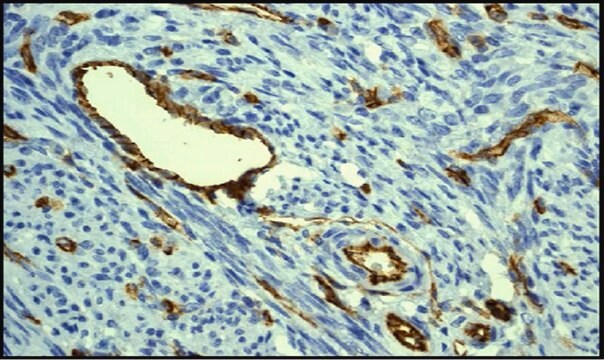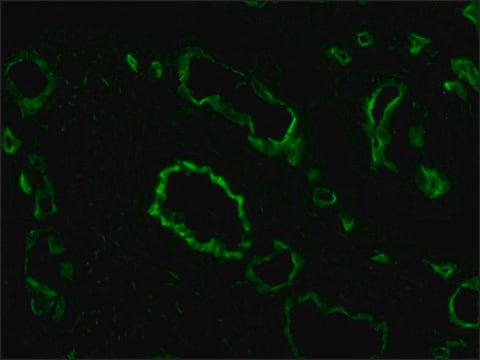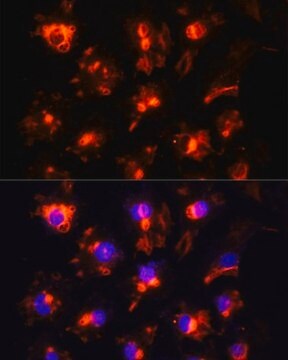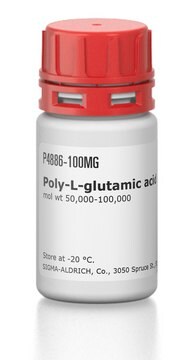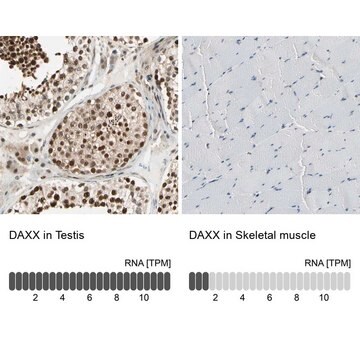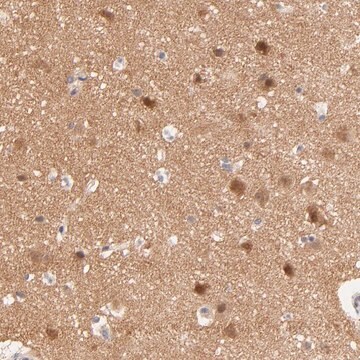MAB1393Z
Anti-PECAM-1 Antibody, clone TLD-3A12, azide free
clone TLD-3A12, Chemicon®, from mouse
Synonym(e):
CD31, MAB1393
About This Item
Empfohlene Produkte
Biologische Quelle
mouse
Qualitätsniveau
Antikörperform
affinity purified immunoglobulin
Antikörper-Produkttyp
primary antibodies
Klon
TLD-3A12, monoclonal
Speziesreaktivität
rat
Hersteller/Markenname
Chemicon®
Methode(n)
ELISA: suitable
flow cytometry: suitable
immunohistochemistry: suitable
western blot: suitable
Isotyp
IgG1
Eignung
not suitable for immunohistochemistry (Paraffin)
UniProt-Hinterlegungsnummer
Versandbedingung
dry ice
Posttranslationale Modifikation Target
unmodified
Spezifität
Immunogen
Anwendung
Zellstruktur
Adhäsions-Proteine (CAMs – Zelladhäsionsmoleküle)
Immunohistology: frozen sections (-20°C methanol fixation), not recommended for traditional formalin fixed tissues.
ELISA
Western Blotting: 1:500. MW = 130-140 kDa
Optimal working dilutions must be determined by end user.
Physikalische Form
Lagerung und Haltbarkeit
Hinweis zur Analyse
POSITIVE CONTROL: Activated microglial cells.
Sonstige Hinweise
Rechtliche Hinweise
Haftungsausschluss
Sie haben nicht das passende Produkt gefunden?
Probieren Sie unser Produkt-Auswahlhilfe. aus.
Lagerklassenschlüssel
12 - Non Combustible Liquids
WGK
WGK 2
Flammpunkt (°F)
Not applicable
Flammpunkt (°C)
Not applicable
Analysenzertifikate (COA)
Suchen Sie nach Analysenzertifikate (COA), indem Sie die Lot-/Chargennummer des Produkts eingeben. Lot- und Chargennummern sind auf dem Produktetikett hinter den Wörtern ‘Lot’ oder ‘Batch’ (Lot oder Charge) zu finden.
Besitzen Sie dieses Produkt bereits?
In der Dokumentenbibliothek finden Sie die Dokumentation zu den Produkten, die Sie kürzlich erworben haben.
Unser Team von Wissenschaftlern verfügt über Erfahrung in allen Forschungsbereichen einschließlich Life Science, Materialwissenschaften, chemischer Synthese, Chromatographie, Analytik und vielen mehr..
Setzen Sie sich mit dem technischen Dienst in Verbindung.